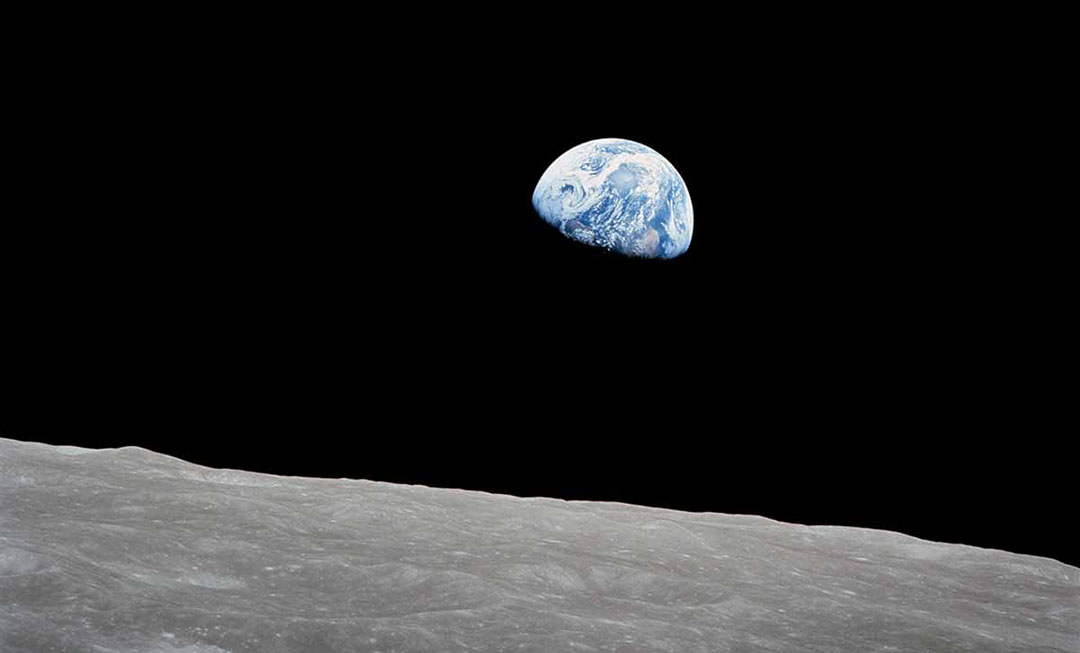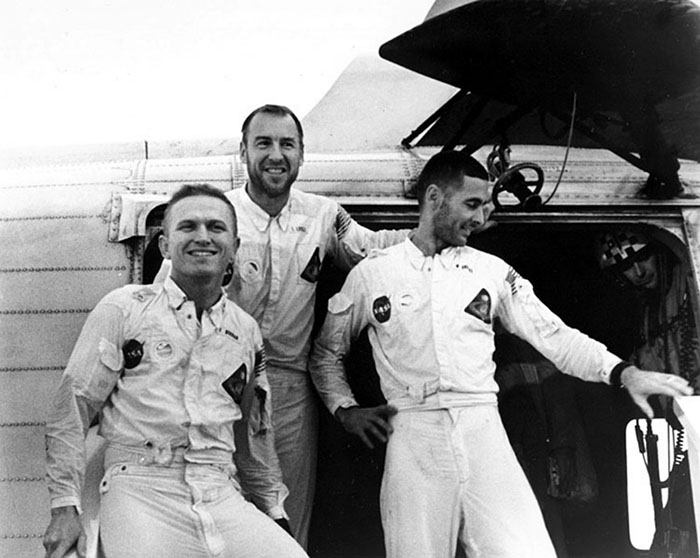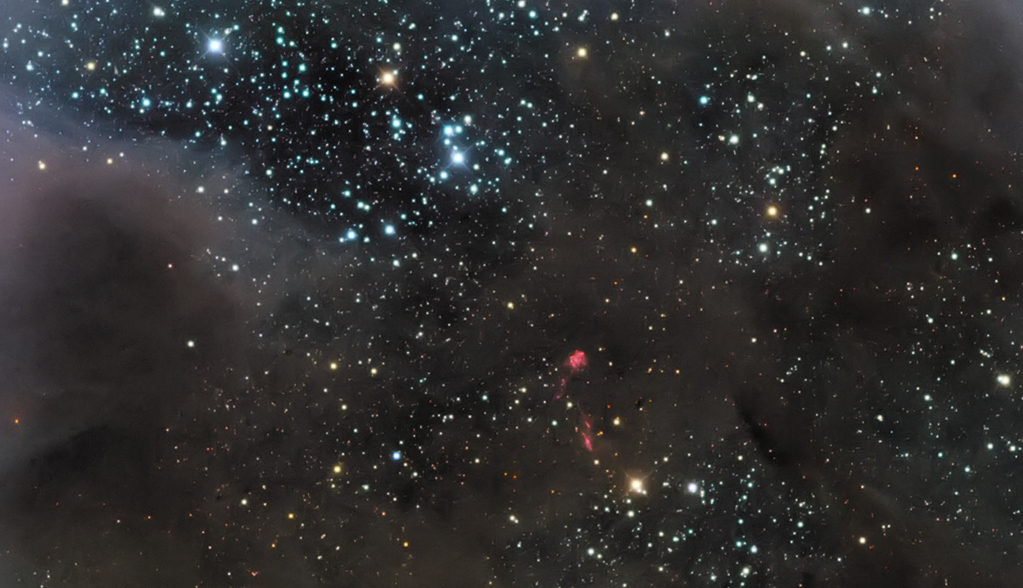|
Word Gems
exploring self-realization, sacred personhood, and full humanity
Ecosystem
Channeled information from the other side, as reported in “Thy Son Liveth: Messages From A Soldier To His Mother” (1920); also the basis of the movie “Rumors Of Angels” (2002), with Vanessa Redgrave:
“We have now reached a river of surpassing beauty. I have always felt, and I am more impressed than ever with the feeling now, that a river is more spiritual than any other expression of physical nature.”


12 Different Types of Ecosystems and Why They Are Important

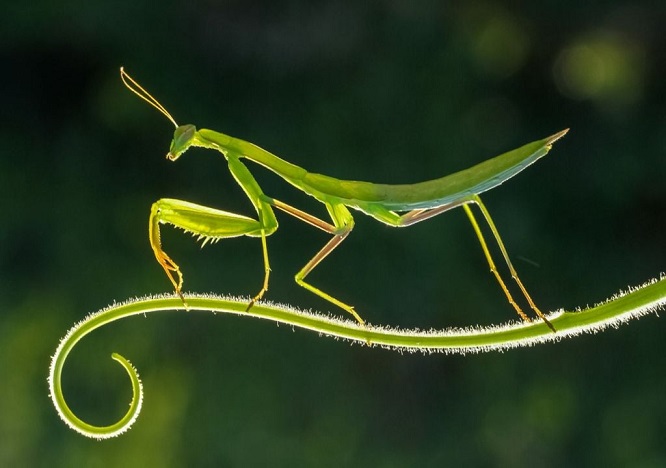
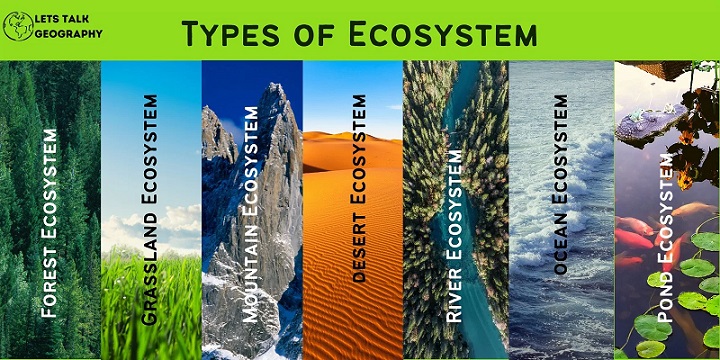

On the “Summerland 1-Minute” page I had the pleasure of presenting other-side information asserting that our friends, the animals, also are blessed with living happily forever. Here's a portion of it:
|
"their own eternal life," part two
The following was reported in "Letters From the Spirit World,” channeled information via the mediumship of Carlyle Petersilea who accessed testimony from his father on the other side:
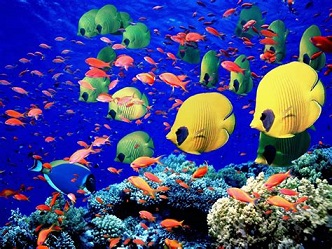
“… within the waters here, glide beautiful fishes — the spirits of those that have died on earth, and it is the same with our animals… nothing is crowded here and there are vast areas of space… When wild animals die on the earth, their spirits rise into great spiritual forests which… human spirits seldom or never visit ... when great sea monsters die, or smaller fish, their spirits ascend and find homes within boundless spiritual oceans. Your globe of earth, that seems so vast to you, is but a small speck, or like a grain of sand, compared to eternity and its eternal heavens… Forms come up through the material, not that they may perish, but that they may be conserved to fill eternity with beauty and intelligence — not only the intelligence of mankind, but the lesser intelligence of beasts, birds, reptiles and fishes — these forms to Nature are just as beautiful as is that of man.”
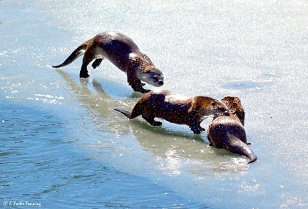
It strikes me just now that certain ones of us, particularly drawn to the animal kingdom, might choose, while a rare opting, to live among our feathered, furry, and finned brethren on a somewhat permanent basis. No one would stop you.
Editor’s note: Some reports from the other side say that animals survive only if they’ve had contact with humans. I think this view is error, with the Petersilea view above as correct.
Notice the words of the reporter: "Forms come up through the material, not that they may perish, but that they may be conserved to fill eternity with beauty and intelligence."
the symphonic ecosystem
In other words, all life forms provide a certain “beauty and intelligence,” and they do so by creating the “symphonic” ecosystem, exhibiting a vast interconnected latticework of harmony and cooperation. See the story of the Yellowstone wolves above: their presence provided unforeseen benefit to a host of other animals and plants. This kind of mutualism, a finely-tuned interplay of cooperation and symbiosis, is a beauty to behold and we need not doubt that the Creator enjoys surveying this grand display of interdependence, an organic "work of art," involving all life forms that have ever lived. And why should this be considered unlikely? See the following writing concerning the work of Cleve Backster indicating that all life forms share in Universal Consciousness, all are connected, all possess a degree of awareness; and, if so, sharing in the same underlying indestructible Consciousness, of course they would survive.
from the "afterlife page"
|
#60 In these articles we speak, not only of survival of consciousness but, Universal Consciousness, a singular pervasive reality, a quantum-based consciousness as 'ground of all being,' a lattice-work of interrelated 'one life.' But what does this mean in practical terms concerning the objects and entities around us in our daily lives?
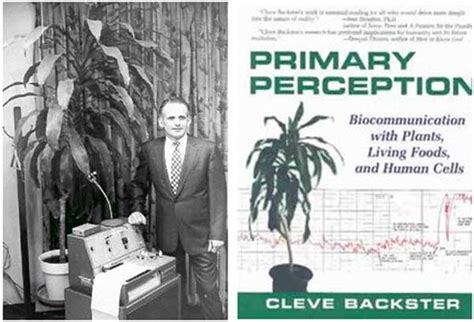
“Cleve Backster (1924-2013) was the world’s foremost expert in lie detection using the polygraph machine. An interrogation specialist for decades with the CIA and FBI, he later ran his own school for lie detection, training police and security forces on how to use the lie detector.”
In his office one day, he was watering a plant and, on a whim, decided to attach the plant to the polygraph. As a result, by this chance event, he discovered that plants respond to human emotions, intentions, thoughts, and other events in their immediate environment.
READ MORE
|
|
Predation is best understood not as a struggle but rather as a kind of balanced coexistence. In natural populations, predators do not exterminate prey species.
As a particular prey animal becomes more scarce, the predator turns to more abundant substitutes.
The wolf does not compete with the caribou but depends on it. The caribou does not struggle with the lichens it consumes but depends on them for its livelihood. It is in the predator’s interest that the prey thrive. Andrewartha and Birch state flatly,
“There is no competition between the predator and its prey.”
Odum notes that
“where parasites and predators have long been associated with their respective hosts and prey, the effect is moderate, neutral, or even beneficial from the long term view.”
Predation does not benefit the individual that is eaten, but it can benefit the rest of the prey population in several ways. After a three-year study of the wolf population in Isle Royale, an island in Lake Superior, L. David Mech writes:
“The wolves appear to have kept the moose within its food supply, culled out undesirable individuals, and stimulated reproduction. Wolves and moose probably will remain in dynamic equilibrium.”
After a similar study of the wolves of Mount McKinley National Park in Alaska, Adolph Murie states of the Dall’s sheep indigenous to the area:
“Wolf predation probably has a salutary effect on the sheep as a species. At the present time it appears that the sheep and wolves may be in equilibrium.”
One benefit of predation is that in certain cases more diversity in prey species is allowed than would otherwise obtain because competitive exclusion is prevented. The addition of a single predator can increase the number of prey species that can live side by side in a given habitat. For example, David Kirk writes:
“One of the most important effects of predator-prey interactions is the reduction of competition between prey species that share a common predator. For example, the sea star Pisaster is a major predator on sedentary mollusks and barnacles of the intertidal zone. If the sea star is excluded from the community, one or two of the sedentary species soon crowd or starve out the other sedentary species because of their competitive advantage in feeding and reproduction. However, if the sea star is allowed access to the simplified community, it removes many individuals in these successful sedentary populations, leaving space for immigration of individuals of several other species. In other words, the addition of a single predator species can lead to an increase in the total number of prey species.”
L.B. Slobodkin has obtained similar results with different species of hydra in laboratory cultures. In the same way different insects preying on specific seeds and seedlings prevent or reduce tree competition.
The predator is not the enemy of its prey in the sense of hating or being angry with it.
Lorenz clarifies the relation:
“The fight between predator and prey is not a fight in the real sense of the world: the stroke of the paw with which a lion kills his prey may resemble the movements that he makes when he strikes his rival, just as a shotgun and a rifle resemble each other outwardly; but the inner motives of the hunter are basically different from those of the fighter. The buffalo which the lion fells provokes his aggression as little as the appetizing turkey which I have just seen hanging in the larder provokes mine. The differences in these inner drives can clearly be seen in the expression movements of the animal: a dog about to catch a hunted rabbit has the same kind of excitedly happy expression as he has when he greets his master or awaits some longed-for treat. From many excellent photographs it can be seen that the lion, in the dramatic moment before he springs, is in no way angry.”
READ MORE
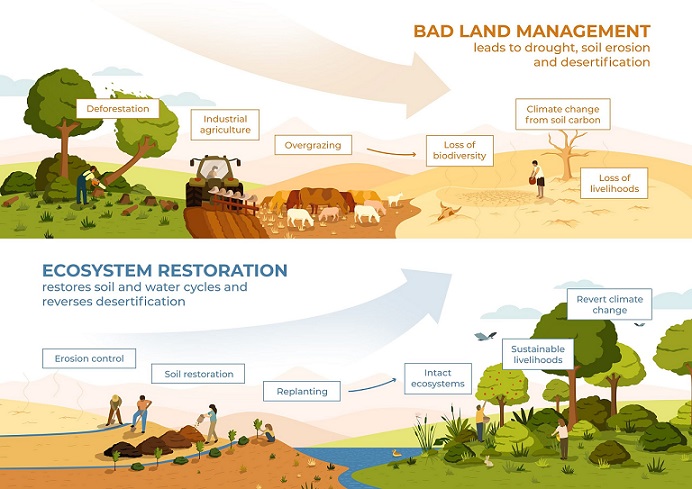
|
Cambridge biologist Dr. Merlin Sheldrake and his new book “Entangled Life” featuring the ecological interconnectedness of organisms
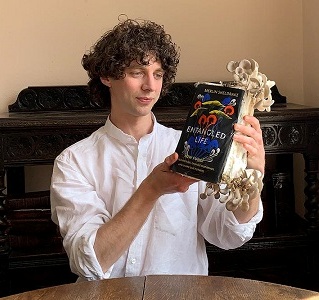
|
"Until recently, fungi have been a relatively neglected area of study, but as Merlin Sheldrake’s recent book, Entangled Life, reveals, the fungal world is as vast, varied and complex as the realms of plants and animals which have been the object of human investigation since antiquity. Combining the latest scientific research – the field is called ‘mycology’ – with stories of personal experience and a vivid style of writing, Entangled Life is an accessible and comprehesive introduction to a subject which seems to have particular relevance to us today. Isabella Tree – of Wilding fame – has said that it ‘changes the way we need to look at life, the planet and ourselves’ and it does, indeed, seem that almost every page reveals some new, hitherto unsuspected wonder."
|
READ MORE
|
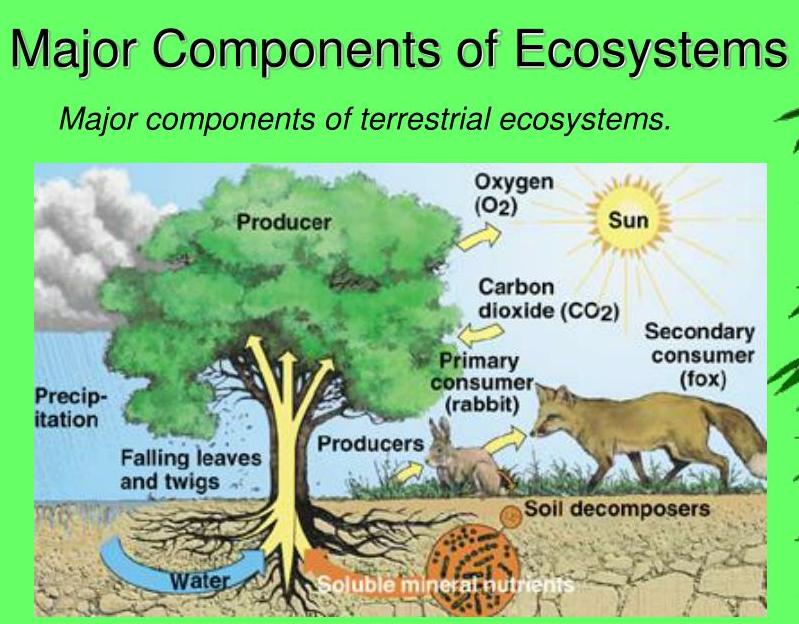

from the "evolution" page
|
the dog-eat-dog, each against all, vicious- competition view of Nature is profoundly errant
The Darwinian paradigm of nature at war with itself, of ruthless competition among species, of creatures engaged in a zero-sum game of survival, while seemingly accurate from a very narrow perspective, fundamentally, is deeply flawed.
Careful research reveals another world of widespread cooperation; moreover, a harmonious, carefully balanced, ecosystem seemingly designed to minimize, and even eliminate, competition in both the plant and animal kingdoms.
.jpg)
|
The New Biology: Discovering The Wisdom In Nature, Augros and Stanciu: “Derived from a classic study by ecologist Robert MacArthur, this diagram illustrates how five species of warbler, similar in size and shape, feed on bud worms in the same spruce trees. They avoid competition by occupying subtly different niches. The shaded areas indicate where each species spends more than half its time. The birds also use different methods of hunting. This pattern of noncompetition is typical of naturally coexisting species.”
|
"Animals fulfill God's will most faithfully: they live to fulfill their Creator's purpose. We do not do this. We meddle with the work of the Creator. But the animals are themselves, and they fulfill the will of God within them in a true and faithful manner." Dr. Carl Jung

| Are not the innocent faces of these creatures utterly and deeply moving? |
READ MORE
|
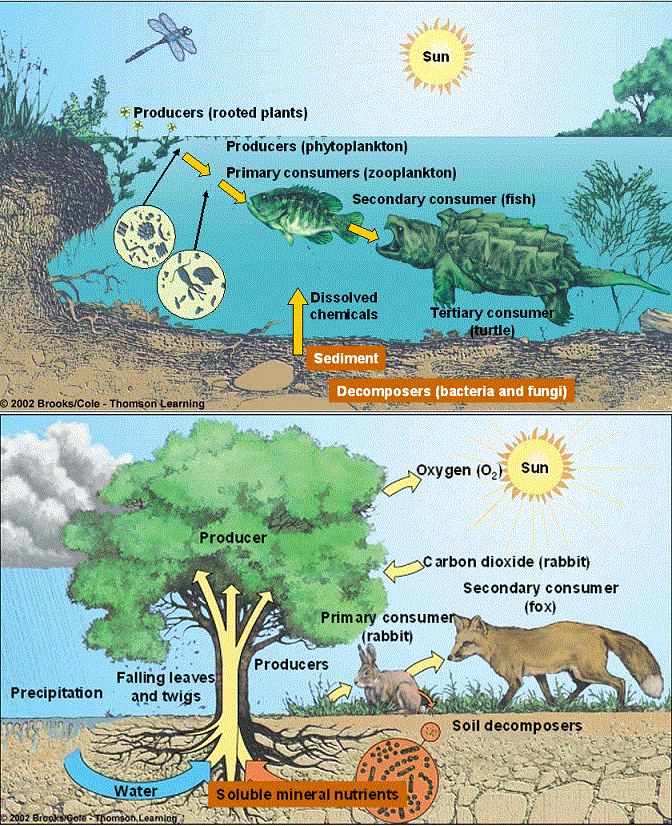
from Beshara Magazine:
|
The Unity Of Bee-Ing: an interview with Heidi Herrmann about the work of The Natural Beekeeping Trust in preserving our precious populations of bees (excerpts)
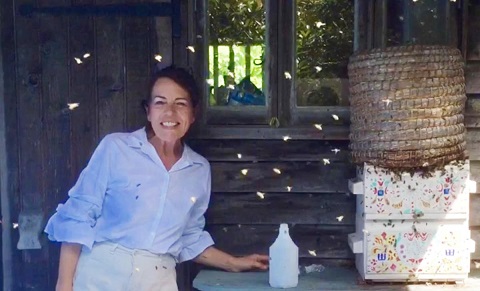
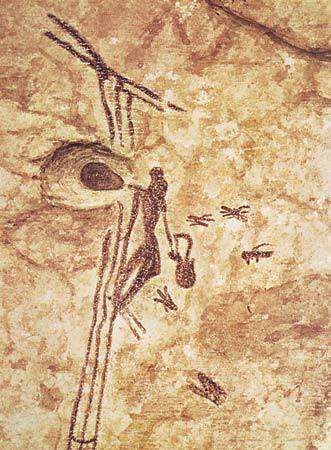
the earliest known painting of bees, Mesolithic cave painting 8-6000 bce
|
bees’ natural inclination is to live high above the earth; research has shown that when bees are free to select their own site, they always choose to live between 2.5m and 6m off the ground
|
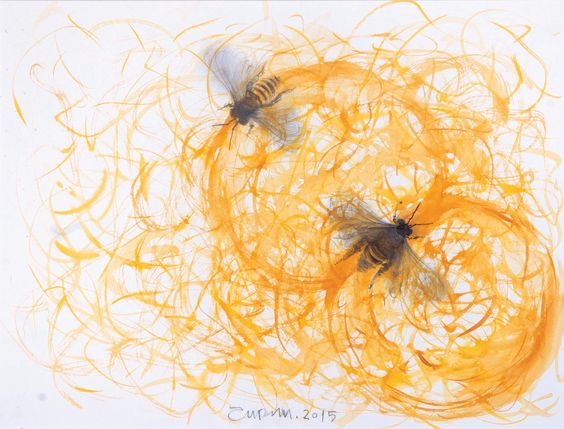
|
The ‘waggle-dance’ of the bees, giving information about the location of good pollen or, during swarming, a suitable new home.
|
But what does Heidi think about our present state of affairs? What ‘message’ are we to take from the present plight of the bees in the world? [being killed by pesticides, etc.] “The plight of the bee is mirror to the plight of our own humanity. When I saw what was happening in the USA, my thought was they have degraded the bee to a level where no further degradation is possible. And what this means, really, is that human beings have degraded themselves to a level that was previously unimaginable. So we need to address the many ways in which we have fallen so far from the ideal place of humanity. This is very clear. The bees demonstrate this as a whole phenomenon – as ‘the Bee’.”
So what is it that we have fallen away from? “From a sense of wholeness, of things being ‘one’. I think we have lost this so completely that all that we have now is an occasional inkling. Nothing in the way we live or shop or ‘consume’ suggests that we have the slightest notion of our interdependence of everything living, including ourselves. We are interdependent with a world that we are destroying, and we are distracting ourselves from the massiveness of the problem by allowing ourselves to become addicted to technologies and entertainments and so forth...
Finally, we ask Heidi what she herself thinks she has gained from her work with the bees. She tells us: “They have provided me with very extraordinary experiences, and I feel that they act as consolers: they make me feel more at home in the world. They have also made me question all conventional wisdom. I have had close contact with sheep and with horses, but I feel that the bees are representatives of ‘unknowing’ in the animal realm, unlike anything else.”
|
Editor's note: This "unknowing" is a very important concept.
“Swarming is the way that the bee reproduces”, maintains Heidi. “Every year or alternate year, the mother colony divides, creating at least one daughter colony... The first swarm is usually of the resident colony, with an experienced queen... Part of the colony will go with her, and those bees know that they are going into uncertainty, as it could take days to set up a new home..."
Professor Thomas Seeley of the University of Cornell, [in his] book, Honeybee Democracy, is a detailed investigation of the decision-making process by which a swarm chooses a new home, revealing that there is no ‘top-down’ command from the level of the queen. Rather, the whole hive, which can consist of between 2,000 and 30,000 individuals, comes to a consensus decision based upon the quality of the dances of the scouts who are sent out to explore possible sites..
Elsewhere on the Word Gems site is referenced the book “Cloud Of Unknowing” by an mystic monk. It promotes the wisdom, and humility, of accepting “unknowing”, rather than pursuing the illusion of certainty, in that God cannot definitively charted, nor can the cosmos with its endless stores of knowledge. The bees seem to embrace this uncertainty, as reflected in their practices; moreover, their remedy is often not cultish top-down determinism but consensus agreement.
|
Heidi: “I also feel that our powers of intuition are strengthened by hanging out with the bees. This is not because of our merit or our training, although these might have an effect, of course – but in the presence of the bees, we do not have to try very hard to be taken into a prayerful mood. What kind of animal is it that can produce this effect? I don’t feel the same with a single bee or a bumble-bee: it is something that happens in the presence of the Bee as a community.”
And what of an aspect that until now we have not touched upon at all – Rudolf Steiner’s assertion in the very first of his bee lectures, that bees are above all a representative of love. In fact, he maintained that:
One only begins to understand the life of the bees when one knows that the bee lives in an atmosphere completely pervaded by love… The bees suck out their food — which they then turn into honey — exclusively from those parts of the plants that are centred in love; they bring, so to speak, the love-life of the flowers into the hive.
Heidi agrees completely: “Love for me is to do with being utterly selfless. I also believe that there is the power of our love for a living creature. I don’t think we need to be apologetic about thinking like this. After all, so many people have pets that they love and who thrive on it. I once gave a talk to a group of very conventional beekeepers in Wimbledon. I talked mainly about the loss of habitat and the reduction in biodiversity of flowers, because I thought that we would all agree about these problems. I explained at the end that I leave my bees alone, believing that they are capable of organising their own lives..."
|

|
the beauty of the world, a streaming song, even as God’s ‘love letter’ to us
Hina Khalid writes in Beshara Magazine, "Participating in the Divine Playfulness," exploring the theological aesthetics of Rabindranath Tagore:
One of the most enchanting notes of the world’s polyphonic ‘love-call’ is that of beauty, which silently streams through the spring flowers and the serene night sky. Tagore presents worldly beauty as a constantly streaming song and even as God’s ‘love letter’ to us, which many of us have – unfortunately – not yet read. As a result, the blissful encounter of love to which we are called remains unrealised. God could have set forth a regal display of the divine power, Tagore writes, which would force us to turn to Him, but instead He seeks to gently woo us through the innumerable beauties of the world – the delicate dreaminess of dawn and the soft serenity of sunset. Indeed, God takes the ‘risk’ that these unfoldings of His beauty will be ignored by us and even that we will reject this beauty as ‘futile’. But still, He will not compel us in any way.
'this tender abundance,' this beauty born of a spirit of 'excess'
Outlining this tender abundance, Tagore writes that whilst we must acknowledge and align ourselves with the fact that the sunrise heralds a new day – and pursue our daily work accordingly – we are not under any compulsion to discern the dawn as ‘beautiful and supremely peaceful’. Our loving attentiveness to its beauty is thus entirely free, but this [this free-spirited non-compulsory acknowledgement of underlying and sometimes-subtle beauty in the world] is itself a freedom to which we are, in a higher sense, bound [bound or intimately aligned with, in that we ourselves are expressions of God's delight to freely create beauty; a beauty which is non-utilitarian in nature, for God did not create us as private advantage to Herself] – for it is only in our free submission to beauty’s call that we inhabit the infinite truth of human life and come to know that this existence is, in fact, ‘a birth of joy’.
One type of loving response to this divine call of beauty is crystallised for Tagore in the vocation of the artist. Tagore presents art as a joyful meeting of the divine and the human, which recapitulates in and through time the love-infused lila of the primordial divine artist. Like God’s cosmic lila [playfulness], art has its origins in the realm of ‘excess’, because we create art not as a means to an end but for freely delighting in the beauty of the world. In other words, when we renounce utilitarian or instrumentalist imperatives...
[instrumentalism: the variety of pragmatism developed by John Dewey, maintaining that the truth of an idea is determined by its success in the active solution of a problem and that the value of ideas is determined by their function in human experience]
... in and through artistic creation, revealing the ‘wealth’ of our inner life, we reflect the God who ‘takes joy in productions that are unnecessary to him’. The artist offers herself and her art to God in perpetual iterations of re-turning, and utters in response to the world’s call...
Endowed with this vision into the plenitude of finite reality, the artist sees more truly, and this is, in short, because she sees with the illuminative lens of love. To see through love is not to veer away from truth but to enter more fully into it, for love, in the worldviews of both Tagore and Pieper, is not a fleeting sentiment or subjective fancy but constitutes the ontological heartbeat of all created reality. As Tagore affirms, love ‘radiantly reveals the reality of its objects’, and, in Pieper’s formulation, the contemplative gaze is only truly itself when it is ‘guided by love… for a new dimension of ‘seeing’ is opened up by love alone’.
This attentive attunement to the truth of things marks, crucially, not a feat of mastery, as though the artist has domesticated the object in her imaginative purview, but heralds an opening into mystery, where the object, and thus the artwork that bears witness to it, tantalisingly resists final capture. What we encounter in art is not an object of the ordinary kind, which we can hurriedly assimilate into our mundane classificatory schemes, but an ineffable horizon of meaning which recedes as it reveals, eludes as it illuminates, and entangles as it enchants. In Pieper’s words:
[…] what do we really perceive when we look at, say, Durer’s ‘Detail of a Meadow’? It is obviously not the blades of grass, which we can observe, even more realistically, also in nature or in a photograph. It is not the blades of grass, not ‘this particular object’ at all… [and] what about songs? […] Of course we hear the words [of the song]! – and yet, provided we witness authentic and significant music and provided we listen in the proper manner, we invariably perceive an additional, most intimate, meaning that would be absent from the words alone.
Tagore echoes this observation of the ‘object-lessness’ of art. Commenting on a poem particularly beloved to him, he writes:
[…] it [the poem] has its grammar, its vocabulary; when we divide them part by part and try to torture out a confession from them, the poem, which is one, departs like the gentle wind, silently, invisibly. No one knows how it exceeds all its parts, transcends all its laws, and communicates with the person. The significance which is in unity is an eternal wonder.
In Tagore’s theological vocabulary, this ungraspable ‘unity’ refers to the atman, the Sanskrit term for the immutable spiritual self which abides within, and yet transcends, all individual beings. Tagore defines the atman as that ‘inner perfection that permeates and exceeds its contents, like the beauty in a lotus which is ineffably more than all the constituents of the flower’. The lotus’s beauty unifies and illumines its individual parts but is not itself one part among those parts, much like, to borrow another one of Tagore’s examples, the melodious whole of a sonata is inseparable from its constituent elements but is not reducible to them.

Albrecht Dürer, “Great Piece of Turf” (1503)
Offering Back to the One
In Tagore’s aesthetic vision, then, the artist transcends her individual self to inhabit the world in attentive love, and her art, nourished in ‘self-forgetful joy’, in turn sets forth the possibility of self-transcendence for others. In this way, Tagore affirms, a true work of art is ‘always speaking’, calling the recipient out of themselves towards the other.
'through her creative offerings, the artist responds to, realises and reflects, the divine, and, in this way, art approximates something akin to worship'
The artist gazes on the world through the eyes of the heart, and through this intensive witnessing of reality, sees beyond the surface of things to inhabit, and to illumine, the silent fecundity of created being. Through her creative offerings, the artist responds to, realises and reflects, the divine, and, in this way, art approximates something akin to worship. The worshipper, like the artist, suspends her quotidian [usual, daily] self-orientation to give herself to the God who is perpetually giving Himself to the world.
Elaborating this mode of self-offering, we repeatedly find across Tagore’s poetry the insistence that, through his creative efflorescence, he is only returning to God that which God has already gifted him. Just as the spring flowers blossom in God’s time and not ours, Tagore’s poems too have their ultimate root not in anything of his making but in the One who implants in all beings their particular perfections. This joyous cycle of gaining and giving is, for Tagore, the archetype of all our finite activities: to harmonise the tunes of our individual wills with the divine will, we must continually dedicate ourselves and our works to the divine singer, in whose breath we live, move, and have our being.
On this note of the cosmic circuitry of receiving and returning, I will let the great C.S. Lewis, who echoes here the musical motifs of Tagore, have the last word:
There is of course a sense in which no one can give to God anything which is not already His – and if it is already His, what have you given? But since it is only too obvious that we can withhold ourselves, our wills and hearts from God, we can, in that sense, also give them. What is His by right and would not exist for a moment if it ceased to be His (as the song is the singer’s), He has nevertheless made ours in such a way that we can freely offer it back to Him.
|
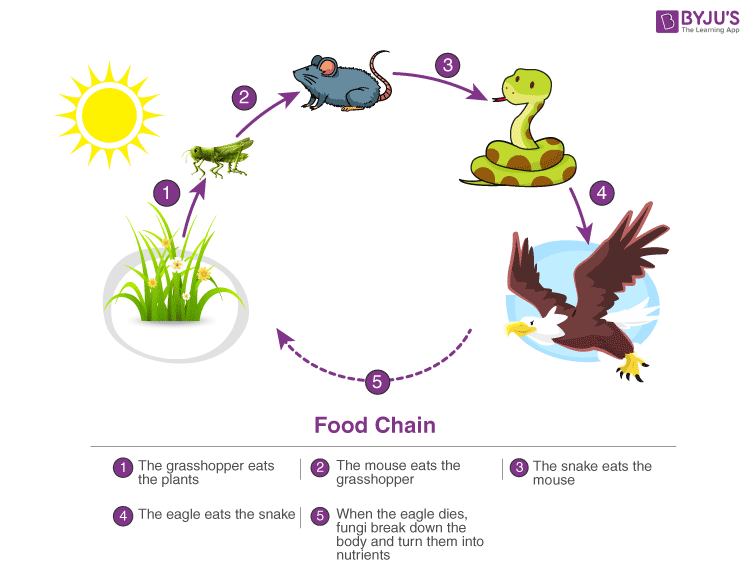
|
Reprinted from Beshara Magazine
Jane Clark contemplates the view of Earth from the moon, first captured in the famous photograph ‘Earthrise’
Fred Hoyle, the British astronomer, said: “Once a photograph of the earth, taken from outside, is available, a new idea as powerful as any in history will be let loose.” Twenty years later, such a photograph was taken by the Apollo 8 mission. Jane Clark assesses the impact it has had upon our understanding of ourselves and the world, looking particularly at the experiences of the 500-plus astronauts who have now viewed our planet from space. In the process, she discovers a new psychological phenomenon – ‘the overview effect’.
This spectacular image of Earth rising on the horizon of the moon was taken on Christmas Eve 1968 by the Apollo 8 space mission. Released by NASA a few days later, it instantly took on iconic status. It was the first picture ever taken of our whole planet from ‘outside’ and has become one of the most powerful symbols of our age.
It is ironic, therefore, that it was a completely unplanned result of the mission. There is even some question about which of the three crew members – Frank Borman, Jim Lovell and Bill Anders – took the shot. Generally, it has been attributed to lunar module pilot Bill Anders on his Hasselblad handheld camera. He has explained:
One of my assignments was to photograph the lunar surface to facilitate the evaluation of potential landing sites. I brought a 250 mm lens to bring that alien terrain into better view. On our fourth orbit, the spacecraft was oriented in a different direction. A startling image captivated the three of us – Earth, 238,900 miles away, ascended above the barren lunar surface.
Compelled by that vision, we scrambled for cameras. I deviated from the rigid NASA flight plan. Every photographic exposure had been determined in advance but I had to capture our view with the long lens on color film. [1]
Recordings of the mission reveal that the first image was actually taken in black and white (see video right or below), but it was Anders’ colour version that was eventually chosen by NASA for distribution. The image was doctored before release to increase the dramatic effect. The view seen by the crew was of the Earth to the side of the moon, not above it, and it was tiny – the size of a small marble. NASA changed the orientation so that Earth seemed to be rising above the moon’s horizon, and the area of lunar landscape was then reduced to make it look bigger and hence more important. [2]
But whichever way you look at it, the view is compelling. No one had expected it. The attention of the mission was directed outwards, to the new worlds opening up to human exploration, but the astronauts soon tired of the moon’s surface, which was grey and lifeless. The vision of Earth, by contrast, was riveting. Anders was later to famously remark:
We went to the moon, but what we really discovered was the planet Earth.
The crew of Apollo 8, stepping off the helicopter onto the deck of the US aircraft carrier Yorktown on their return home: William Anders (right), James Lovell (centre) Frank Borman (left). Photograph: NASA
Beauty and Unity
The original power of the image has perhaps diminished over the past fifty years. But viewing Earth from ‘above’ has not lost its attraction for the many astronauts – around 570 to date – who have experienced it first hand. [3] During the first eight missions of the International Space Station, for instance, almost 200,000 photographs of Earth were taken, most of them (over 80%) by crew. And when the members of the Skylab IV crew were denied the time to contemplate it because of excessive workload, they downed tools and rebelled, maintaining that they had “a need to reflect, to observe, to find their place amidst these baffling, fascinating, unprecedented experiences”. [4]
So what is it that is so inspiring about looking back at our planet?
Well, the most obvious answer is that it is beautiful: bright, colourful and palpably alive against the black backdrop of seemingly infinite space. Edgar Mitchell, an astronaut on the Apollo 14 mission (1971), and the sixth person to walk on the surface of the moon, describes it like this:
Suddenly, from behind the rim of the moon, in long, slow-motion moments of immense majesty, there emerges a sparkling blue and white jewel, a light, delicate, sky-blue sphere laced with slowly swirling veils of white, rising gradually like a small pearl in a thick sea of black mystery. It takes more than a moment to fully realize this is Earth… home. [5, page 138]
whilst James Irwin on Apollo 15 (1972) tells us:
The Earth reminded us of a Christmas tree ornament hanging in the blackness of space. As we got further and further away, it diminished in size. Finally it shrank to the size of a marble, the most beautiful marble you can imagine. That beautiful, warm living object looked so fragile, so delicate, that if you touched it with a finger it would start to crumble. Seeing this has to change a man. [5, page 38]
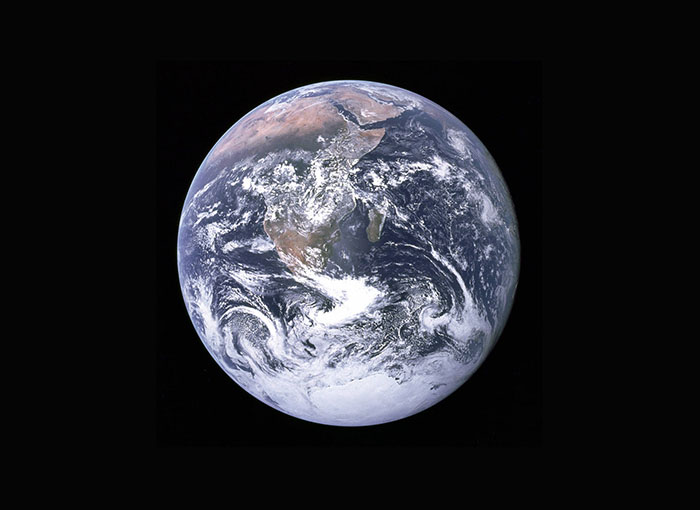
The Blue Marble. View of the Earth as seen by the Apollo 17 crew travelling toward the moon in 1972. This translunar coast photograph extends from the Mediterranean Sea area to Antarctica. It was the first time the Apollo trajectory made it possible to photograph the South polar ice cap. Photograph: Astronaut photograph, courtesy of NASA Johnson Space Center Gateway to Astronaut Photography of Earth [/]
But it is not just aesthetic beauty which seems to have effect. Both Irwin and Mitchell underwent a religious-type experience when they looked down on their home planet; Irwin experienced a rekindling of his Christian belief, but for Mitchell (who went on to found the Institute of Noetic Sciences [/]), it was a moment of conversion:
When I went to the moon I was a pragmatic test pilot. But when I saw the planet Earth floating in the vastness of space, the presence of divinity became almost palpable and I knew that life in the universe was not just an accident. […] On the return trip home, gazing through 240,000 miles of space toward the stars and the planet from which I had come, I suddenly experienced the universe as intelligent, loving, harmonious. [5, page 138]
Most other astronauts express themselves in much more secular terms, but it is clear that they have nevertheless experienced profound changes. They talk, for instance, about a new awareness of the oneness of the Earth and its people. This is from Sultan bin Salman al-Saud (Discovery 5, 1985):
The first day or so we all pointed to our countries. The third or fourth day we were pointing to our continents. By the fifth day, we were aware only of one earth. [5, page 82]
Similarly, the Syrian astronaut Muhammad Faris (Soyus TM-3, 1987) describes how:
From space I saw Earth – indescribably beautiful with the scars of national boundaries gone. [5, page 77]
Yuri Artyukhin, a Russian astronaut who flew on the Soyuz 14 mission in 1974, takes the matter even further:
That feeling of unity is not just simply an observation. With it comes a strong sense of compassion and concern for the state of our planet and the effect that humans are having on it. It isn’t important in which sea or lake you observe a slick of pollution, or in the forests of which country a fire breaks out, or on which continent a hurricane arises. You are standing guard over the whole of our earth. [5, page 71]
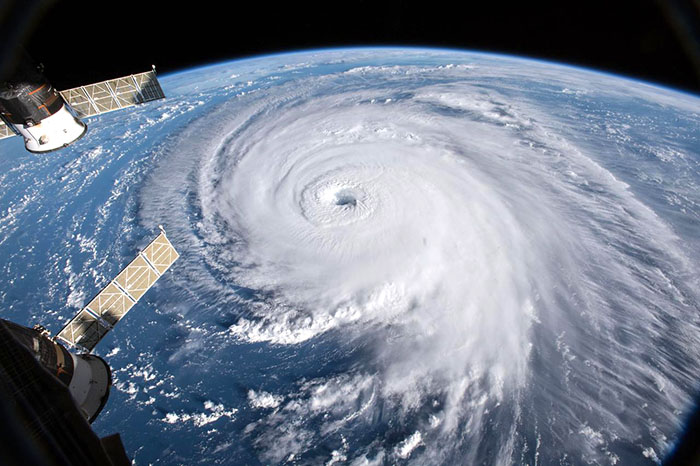
Hurricane Florence as seen from the International Space Station. A high-definition video camera outside the space station captured images as Florence, a Category 4 storm at the time, crossed the Atlantic with winds of 130 miles per hour. Photograph: NASA, 11 September 2018
This sense of specialness and vulnerability is a common theme of astronaut comments. Michael Collins, the third man on Apollo 11, the moon landing expedition which happened less than a year after Apollo 8, has confessed that:
The thing that really surprised me was that it [Earth] projected an air of fragility. Why, I don’t know. I don’t know to this day. I had a feeling it’s tiny, it’s shiny, it’s beautiful, it’s home, and it’s fragile. [6]
while Taylor Wang, the Chinese–American astronaut who flew on Challenger 7 (1985), develops a beautiful analogy:
They say, if you have experiments to run, stay away from the window… it was not until the last day of the flight that I even had a chance to look out. But when I did, I was truly overwhelmed. A Chinese tale tells of some men sent to harm a young girl who, upon seeing her beauty, become her protectors rather than her violators. That’s how I felt seeing Earth for the first time. “I could not help but love and cherish her”. [5, page 60]
The awakening of tenderness and protectiveness has brought about the most evident effect of ‘Earthrise’ to date at a cultural level. In 1968, people were still absorbing Rachel Carson’s seminal work Silent Spring, which revealed for the first time the damaging effect of pesticides upon the ecosystem (see our previous article). The image of the earth as a living, fragile entity, alone in the vastness of space, was catalytic...
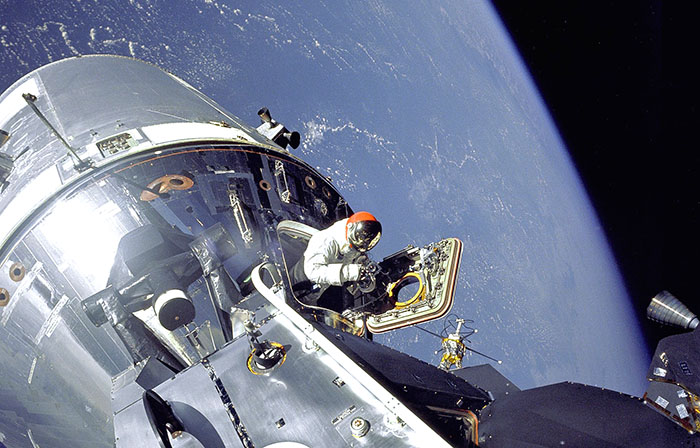
Apollo 9: Commander module pilot David Scott’s extravehicular activity (EVA) on the fourth day of their mission. This photograph was taken by Russell Schweickart, lunar module pilot, from the porch of the module. Inside was astronaut James A. McDivitt. Photograph: NASA, 3 June 1969
The Overview Effect
An abrupt change of perspective has been so commonly experienced by astronauts that it is now recognised as new psychological phenomenon, ‘The Overview Effect’ (see video right or below for an extended exposition). The term was first coined by Frank White in his 1987 book of the same name [8] and it has since become a subject of serious study, not least because as we start to think about longer space journeys to Mars and beyond, it is a strong positive in a situation where there are many negatives – fear, loneliness, stress, dealing with weightlessness and cramped living spaces over long periods of time, interpersonal problems, etc. By contrast, the overview effect produces a sense of well-being and fulfilment, which in turn has measurable benefits for both the mind and the cardiovascular system.
One of its main features has been identified by researchers as ‘awe’. This is defined as “the intense emotion resulting from the perception of something vast”, bringing about feelings of “wonder, reverence, humility and unity”. [4] The awe experienced by astronauts differs from the feeling we might experience when viewing the vastness of any earthly feature – even the greatness of the Grand Canyon or the Himalayas – because it also includes a sense of totality; seeing things as whole, whether that be the earth, the ecosystem, humankind or the universe itself. It is, as Edgar Mitchell has put it “instant global consciousness”. This experience in itself changes people, and like the crew of Skylab IV, they need time to absorb it.
But for some people, there is even more. The overview effect can trigger what psychologists now call ‘self-transcendent experiences’ in which people undergo a temporary change of identity – a release from the individual self – leading to a sense of deep connection with others. These experiences are likened by researchers to states of spiritual transformation – “which” they remind us, “have historically been associated with practices such as prayer, meditation, and religious rituals as well as the use of psychedelic drugs”. [4] One of the most striking examples of such an experience is recounted by astronaut Russell Schweickart, a crew member on the Apollo 9 mission (1969):
I had five minutes when I was outside on the EVA [extravehicular activity] because of a camera failure and I had nothing to do. I decided that I was going to be just a human being for those five minutes and not an astronaut. So I spent the time just looking at this incredible scene, and one of the many questions that came up was: What does it mean when I say ‘I’? Am I just me, or – looking at life and the earth – am I ‘us’? [9]
In Kevin Kelley’s beautiful book The Home Planet, [5] from which many quotes in this article have been taken, he talks further about what he means by this sense of ‘us’:
You look down and see the surface of that globe that you’ve lived on all this time, and you know all those people down there, and they are like you, they are you, and somehow you represent them. You are up there as a sensing element, that point out on the end, and that’s a humbling feeling. It’s a feeling that says you have a responsibility. It’s not for yourself. The eye that does not see does not do justice to the body. That’s why it’s there; that’s why you are out there. And somehow you recognize that you are part of that total life…
And when you come back, there is a difference in the world now. There’s a difference in the relationship between you and the planet and … all those other forms of life on that planet. [5, page 144]
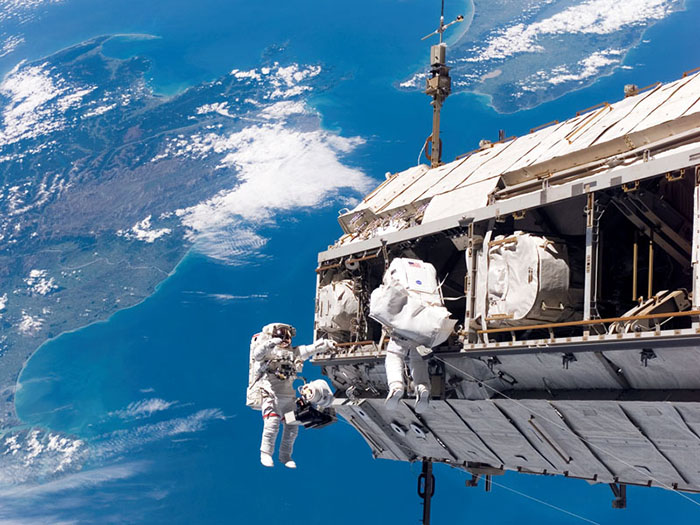
The International Space Station (ISS). Astronauts Robert Curbeam (USA) and Christer Fuglesang (Sweden) work to attach a new truss segment. The station is so large that it could not be launched all at once, and so was built piecemeal, with large sections added continually by flights of the space shuttle. Photograph: STS-116 crew, NASA. Astrology Picture of the Day (APOD) 25 December 2006
Contemporary Experiences
The early astronauts spent relatively little time in space, with most of the Apollo missions lasting just a few days. Since then, with the establishment of space stations, it has become common for people to remain for much longer periods in the earth’s orbit. The current record-holder is Russian astronaut Valeri Polyakov, who spent 437 continuous days on Soyuz TM-18/20 in 1994/5, whilst Gennadi Podolka has clocked up a total of 878 days – two and a half years – over six stints. [3]
But familiarity does not seem, in this case, to lessen the effect – on the contrary. In a recent TV series One Strange Rock [10], which documents contemporary developments in space, Chris Hadfield, the Canadian astronaut who served as commander of the ISS, recounts:
One of the biggest changes I found in myself as a result of flying in space was that the difference between ‘us’ and ‘them’ disappears. Somehow going round the world in 92 minutes not just once but over and over again, turned the entire world into one shared place. I think it is a perspective that seeps into astronauts. I think it’s a perspective that’s kinda good for everybody. [10]
In the same series, the American astronaut Peggy Whitson, who spent a total of 666 days in space before her retirement in 2017, explains:
As I’ve grown up and gone to college and gone to graduate school, home has expanded from Iowa to Texas to the United States. But since being in space, home is actually planet Earth. [10]
And in a vivid description of the sudden transition in consciousness which is the essence of the overview effect, she goes on:
The first thing we want to do [when we go into space] is check out the view. Going into space is like I lived my whole life in a semi-dark room, and [then] somebody flipped on the lights. [10]
What is more, the experience seems to produce lasting changes, increasing people’s sense of unity with others and their altruistic tendencies when they return home. As Boris Volynov said after his flights on Soyuz 5 and 21 (1969 and 1976):
During space flight, the psyche of each astronaut is reshaped. Having seen the sun, the stars, and our planet, you become more full of life, softer. You begin to look at all living things with greater trepidation and you begin to be more kind and patient with the people around you. At any rate, that is what happened to me. [5, page 88]
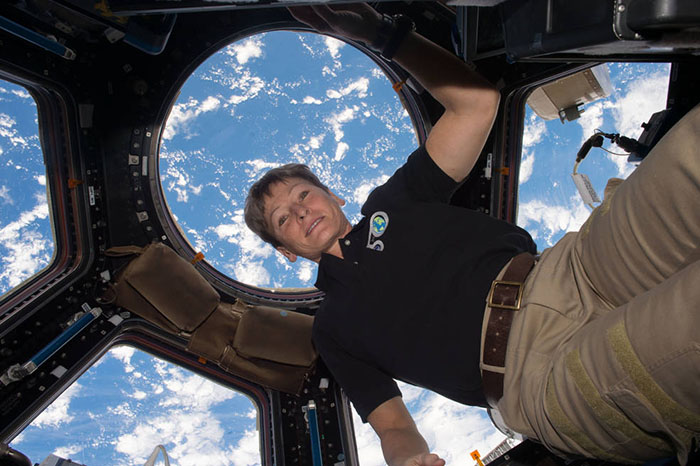
Peggy Whitson, the American astronaut who was has spent 666 days in space, in front of the Cupola windows of the International Space Station. Photograph: NASA, 18 July 2017
Reflections
There is no doubt that there are enormous contradictions in the space programme. Whatever might be said about “one giant step for mankind”, the Apollo missions were strongly motivated by cold war rivalry with Russia; one of the main tasks assigned to Armstrong and Aldrin was to plant an American flag on the moon. Once the race was won, political interest waned and NASA funding was dramatically cut. Nowadays, exploration of the moon – and indeed many aspects of space travel – is largely left to commercial interests, either for tourism or exploitation of resources.
Similarly, no one following the recent coverage of the first moon landing could fail to see how the event, watched at the time by an audience of over 600 million worldwide, touched people and brought them together. But fifty years on it is hard to perceive any lasting result of this shared moment of unity. We seem to be as divided as we have ever been.
One of the problems, perhaps, is that the psychologists tell us that in order to really experience the overview effect, you have be there yourself, in person, looking down upon the earth. Contemplating an image is not the same. This means that even if people like Elon Musk were to succeed in establishing space tourism, the vast majority of us will never have the first-hand experience, and so never truly undergo the change of perspective that the overview seems to catalyse.
But having spent the last weeks looking at picture after picture of Earth from space, every one of them testifying to the almost unbelievable beauty and preciousness of our planet, I find it hard to believe that these images do not have a profound effect. Even at second hand, the perspective – to paraphrase Chris Hadfield – “seeps into us”. The British astronomer Fred Hoyle, writing in 1948, maintained that:
Once a photograph of the Earth, taken from outside, is available, once the sheer isolation of the Earth becomes known, a new idea as powerful as any in history will be let loose.
He was surely right, even if the full impact of this new idea has not yet been felt.
But in a way, it is not new. As researchers into the overview effect have noted, the idea of unity – one earth, one people, one ‘I’ and even, in the end, one reality – has been a foundational principle of the spiritual/mystical traditions throughout the ages, and it has been realised and lived by people of wisdom. All that has changed now is the mode in which we know it – as a physical reality as well as in the imagination. From this point of view, these brave astronauts are simply bearing witness – acting, as Rusty Schweickart puts it, as our “sensing element”, our “eye” – to a truth which is already deeply embedded in our psyche. Rakesh Sharma, the Indian astronaut who served on Soyuz T-11, describes the situation like this:
My mental boundaries expanded when I viewed the Earth against a black and uninviting background, yet my country’s rich traditions had conditioned me to look beyond man-made boundaries and prejudices. One does not have to undertake a space flight to come by this feeling. [5, page 80]
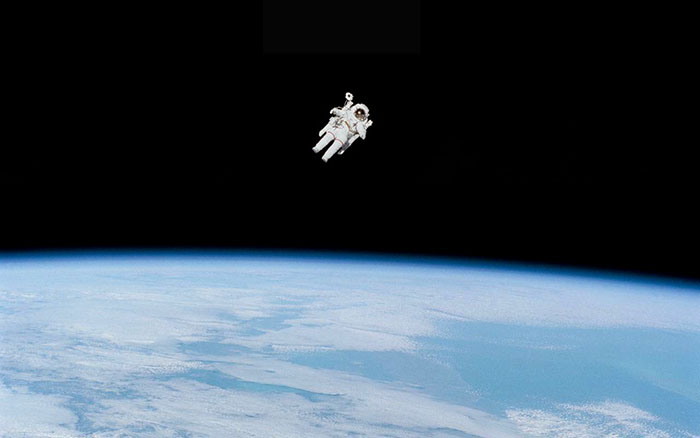
Astronaut Bruce McCandless photographed during the first of his two space shuttle missions. He went ‘free-flying’ to a distance of 320 feet away from the shuttle, using a jet pack called the Manned Maneuvering Unit, or MMU. He and his colleague Robert Stewart were photographed by fellow crew-members in Challenger’s cabin. Photograph: NASA, 2 November 1984
And looking the other way… We should not forget that astronauts sit between two wonderful views; on the one hand, they look back upon their home planet, and on the other they look out into the vastness of space. Since the 1960s, we have added many additonal ‘eyes’ to our preception of the universe through international projects such as the Hubble Telescope and probes into the outer reaches of the solar system. Every day, NASA makes available a new wonder from this exploration as Astronomy Picture of the Day (APOD). The picture below was the APOD for 2nd August 2019 when this article was published; you can see the current picture by clicking on the button below.
Chamaelean II dark nebula, about 500 light years from Earth. Photograph: Dan Goldman/NASA
|
|



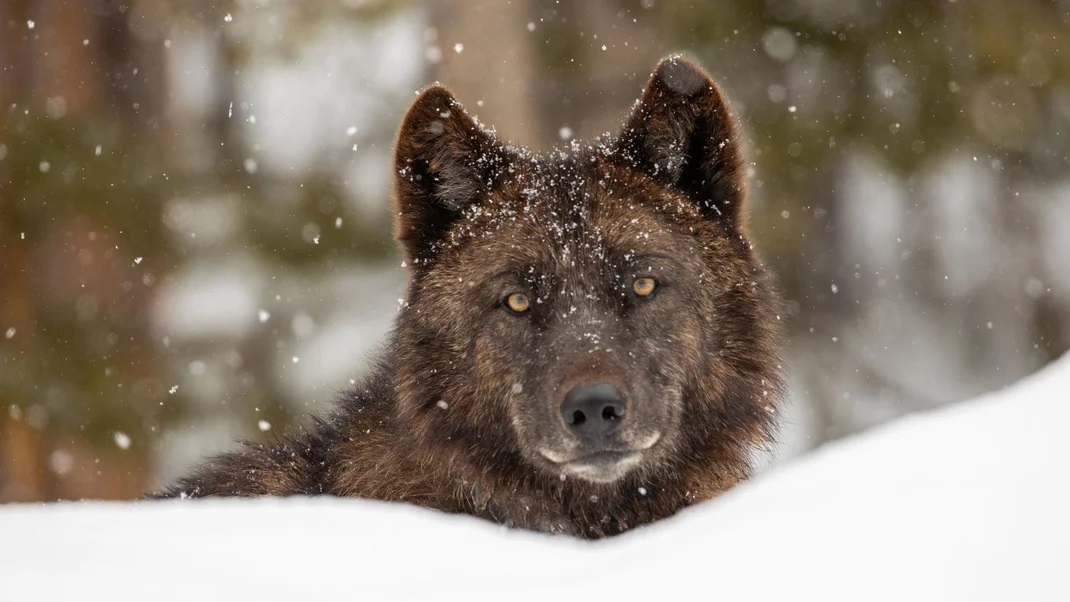










.jpg)








